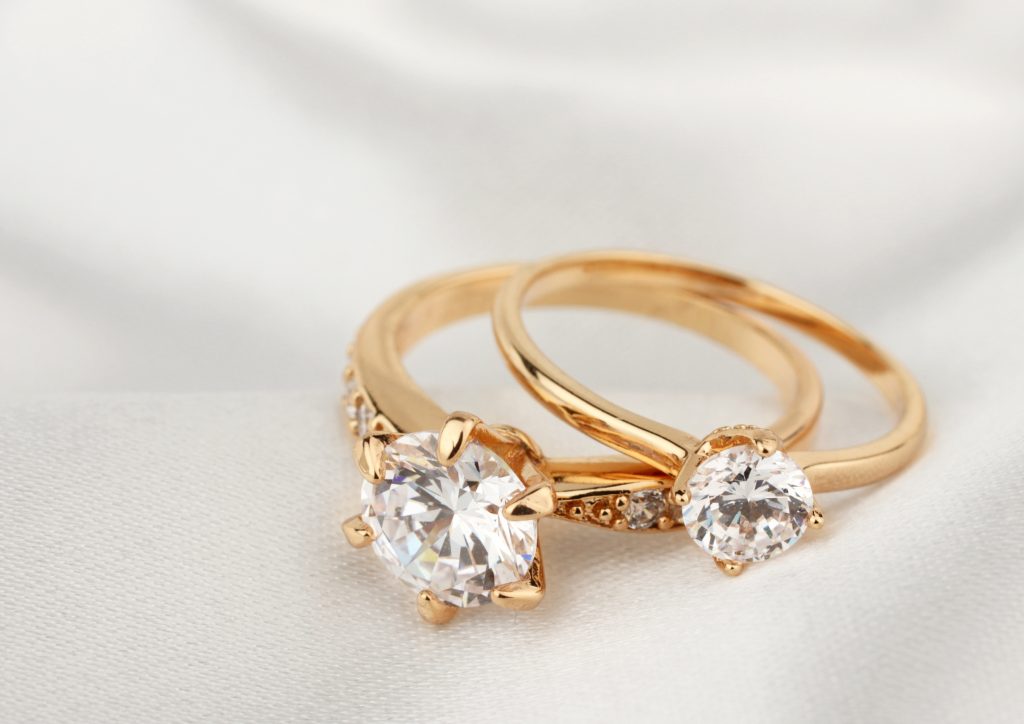Spotting Fake Gold and Diamonds: A Comprehensive Guide
Gold and diamonds are prized possessions that represent wealth, beauty, and timeless elegance. However, the high value of these materials makes them a prime target for counterfeiters. This time on the blog, we are going to do something a bit different. Instead of offering you direct guidance, we are going to give you a look at how experts like us here at Stewart Kuper Jewelers do our jobs. You can use some of the advice in this guide to spot fakes and maintain the integrity of your collection.
Understanding Gold Purity
Gold purity is measured in karats, with 24-karat gold being pure gold. Common purities include 18K (75% gold), 14K (58.3% gold), and 10K (41.7% gold). The remaining percentage is made up of other metals that add strength and color variations.
How to Test Gold:
1. Magnet Test:
Gold is not magnetic. If a piece is attracted to a magnet, it is likely fake or contains significant amounts of other metals.
2. Nitric Acid Test:
Use a small drop of nitric acid on the gold piece. Real gold will not react, while a green reaction indicates a base metal and a milky reaction suggests gold-plated sterling silver.
3. Ceramic Test:
Rub the gold on an unglazed ceramic plate. Real gold will leave a gold streak, while fake gold will leave a black streak.
4. Density Test:
Gold has a high density of 19.3 g/cm³. Measure the weight and volume of the piece and calculate its density. Significant deviations from this standard suggest that gold is not pure.
Identifying Real Diamonds
Diamonds are valued for their brilliance, hardness, and rarity. Authenticating diamonds involves examining several key properties.
How to Test Diamonds:
1. Transparency Test:
Place the diamond over a piece of newspaper. If you can read the text through the diamond or see distorted letters, it’s likely fake. Real diamonds refract light so intensely that you cannot see through them.
2. Fog Test:
Breathe on the diamond to create a thin layer of fog. A real diamond disperses the heat instantly and won’t stay foggy, while a fake diamond will remain fogged for a few seconds longer.
3. Water Test:
Drop the diamond into a glass of water. Due to its high density, a real diamond will sink, whereas many fakes will float or sink slowly.
4. Loupe Examination:
Use a jeweler’s loupe to inspect the diamond. Real diamonds often have small natural imperfections known as inclusions, while synthetic diamonds or other fake stones may appear too perfect.
Advanced Testing Techniques
For both gold and diamonds, advanced testing can provide conclusive results.
Gold Testing:
Xray Fluorescence (XRF) Spectrometry:
This non-destructive technique measures the elemental composition of the gold, providing an accurate reading of its purity.
Fire Assay:
A more traditional but destructive method, the fire assay involves melting the gold to separate and measure its pure content. Obviously, this is not something we recommend for amateurs.
Diamond Testing:
Electronic Diamond Tester:
This device measures thermal conductivity. Diamonds have high thermal conductivity, whereas most fakes do not.
UV Light:
Under ultraviolet light, diamonds typically exhibit a blue fluorescence. However, this test is not definitive as not all diamonds fluoresce, and some fakes can mimic this trait.
Spotting fake gold and diamonds requires a mix of basic testing methods and advanced techniques. We follow these to continue building our reputation for selling only genuine, high-quality jewelry.
Have real gold and diamonds you’d like to sell? Stewart Kuper Jewelers is the buyer for you! Give us a call today and schedule your appointment with Stewart to get a true appraisal for your unwanted gold and diamonds.
Call 520-750-0050



